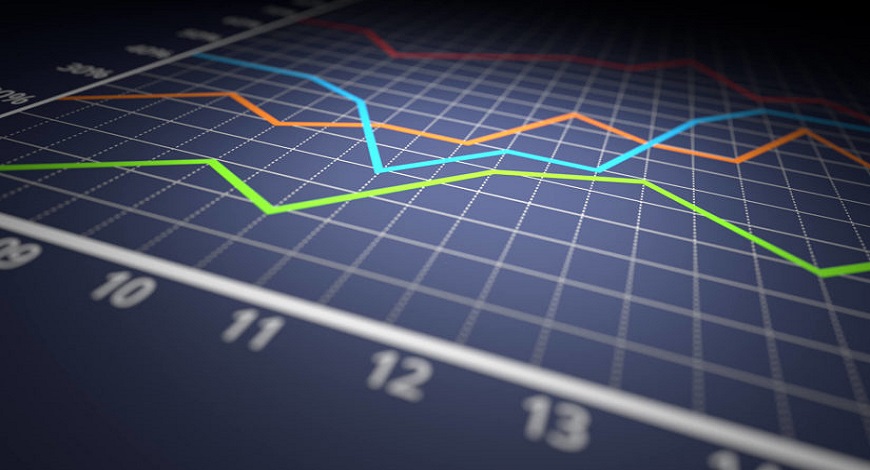BRUSSELS (Parliament Politics Magazine) – This is how the eurozone economy performed in the first full quarter after the Ukraine war increased energy prices and disrupted supply lines.
France’s economy shows 0.5% growth, avoids recession
By resuming growth in April through June, France was able to avoid a recession as increased exports helped to counteract sluggish domestic demand.
According to recently disclosed data, the second-largest economy in the eurozone, France’s GDP increased by 0.5 percent in Q2 after contracting by 0.2 percent in January–March due to rising inflation.
This is better than anticipated and indicates that France has averted two consecutive quarters of declining growth.
“GDP in volume terms strongly recovered after the decrease in the previous quarter,” says France’s statistics agency INSEE.
Exports increased by 0.8 percent, while imports decreased by 0.6 percent, as foreign trade boosted growth.
However, household consumption expenditure decreased once more as French consumers felt the pinch of rising costs.
In response to the Russian gas crisis, German cities switch off lights and mandate cold showers
Germany is scrambling to cut its energy consumption in the wake of an impending Russian gas crisis. Cities are cutting lights on public landmarks, turning off fountains, and forcing cold showers in public swimming pools and sports facilities.
The first major city to announce energy-saving measures, such as turning off the hot water in the showers and bathrooms of city-run buildings and recreation centres, was Hanover in north-western Germany on Wednesday.
The use of portable air conditioners and fan heaters is prohibited in the Lower Saxony state capital’s municipal buildings, which may only be heated from 1 October to 31 March and no higher than 20C (68F) room temperature. Exceptions to the saving measures are schools, nurseries, hospitals and care homes.
Germany’s economy becomes stagnant
The German economy showed no growth in the latest quarter as Europe’s biggest economy was impacted by rising prices, a slowdown in trade, and supply chain disruptions as a result of the war in Ukraine.
Germany’s GDP remained mostly unchanged in Q2 as compared to Q1, a little worse than what was expected and merely 1.5 percent higher than what was a year ago.
Statistics body Destatis claims that sluggish trade has hurt growth.
Private and public consumer expenditure was the main driver of the economy, while the trade balance restrained expansion.
Economic growth is definitely impacted by the challenging global economic conditions brought on by the ongoing corona pandemic, disrupted supply chains, rising costs, and the war in Ukraine.
However, Germany’s growth in the first quarter was upgraded to +0.8% from 0.2% previously, so it began 2022 stronger than what was thought.
Spain’s 1.1 percent growth is higher than expected
And in the second quarter of the year, the Spanish economy grew by 1.1 percent more quickly than expected.
This is substantially quicker than the 0.4 percent that economists had predicted and is an increase from the 0.2 percent during the last three months.
Austria’s growth in Q2 was 0.5%
The economy of Austria grew once more in the previous quarter.
Austria’s GDP grew 0.5 percent in April-June while it continues to recover from the countrywide lockdown that occurred last winter as it battled a serious Covid-19 outbreak.
UK consumer credit growth soars as approvals for mortgages decline
As households struggle to keep up with an inflation rate that has reached a 40-year high, UK consumer credit growth has risen at the quickest rate in three years.
According to the most recent statistics from Bank of England, consumer credit borrowings increased £1.8 billion in June, up from a £900 million rise in May.
A further £1 billion was spent on credit cards, while another £800 million was used for personal loans, car dealership financing, and other consumer lending.
All consumer credit grew at an annual rate of 6.5 percent in June, the highest level since May 2019, while credit card borrowing jumped 12.5 percent, the highest level since November 2005.
It’s a sign that rising living costs are affecting households, said economist Shaun Richards.
Director of property lender MT Finance, Tomer Aboody says:
In the future, greater inflation and living expenses are likely to force many people to draw from their savings to get by, making life worse for those without that safety net.
The BoE also notes a decrease in approvals for home purchases, a sign of potential borrowing, fell from 65,700 in May to 63,700 in June, which is below the 12-month pre-pandemic average.
With 8.9% percent, eurozone inflation sets a new record
As energy prices continue to hurt the eurozone’s economy, inflation has increased throughout the region to a new all-time high this month.
According to Eurostat, consumer prices have increased by 8.9 percent over the past year, up from 8.6 percent in June, as the cost of living pressure gets worse.
In July, energy is anticipated to have the highest annual rate (39.7% vs. 42.0% in June) due to the increase in gas prices brought on by the war in Ukraine.
However, the scope of inflation was greater, with prices for food, tobacco and alcohol surging by 9.8% in the year to July (up from 8.9 percent in June) Services inflation increased to 3.7 percent, while non-energy industrial products cost 4.5 percent more (up from 4.3 percent) (from 3.4 percent in June).






